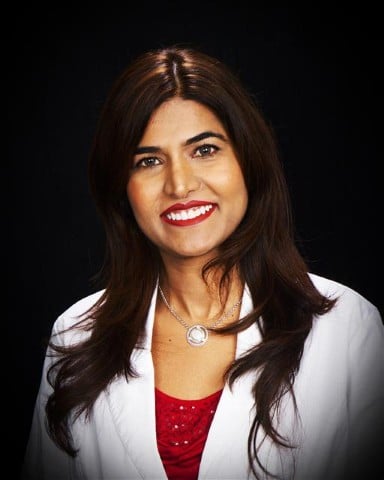 Acne scars may develop in the skin after the actual acne lesions disappear. Scarring is more common with the more severe types of acne, but may accompany any type, especially if the patient has picked at or squeezed the pimples. Typical acne scars appear as indentations in the skin of variable depth that do not improve substantially over time. This should be distinguished from skin discoloration in the areas of former pimples that does improve over weeks to months. For acne in general, please see our special chapter on acne .
Acne scars may develop in the skin after the actual acne lesions disappear. Scarring is more common with the more severe types of acne, but may accompany any type, especially if the patient has picked at or squeezed the pimples. Typical acne scars appear as indentations in the skin of variable depth that do not improve substantially over time. This should be distinguished from skin discoloration in the areas of former pimples that does improve over weeks to months. For acne in general, please see our special chapter on acne .
Acne scars may continue to enlarge in persistently reddened areas, even after the pustule (Pimple) has subsided. For such patients, 4 to 5 Intense Pulsed Light treatments, 3-4 weeks apart, can be very beneficial in that they suppress the persistent redness and the consequent possibility of scar enlargement.
Depressed acne scars can be shallow or deep, very narrow (“Ice pick”) or wide (“Dish type”) or Rolled type or in between (“Boxcar type”). They can be limited to the skin or involve also the subcutaneous fat.
Thickened acne scars can be Hypertrophic (Surface of the scar limited to the size of the original lesion) or Keloidal (Larger than the original lesion). The latter are more common on the chest and back.
Acne scars Treatments:
Acne scar removal is a very vast and complex subject. At Lakeviewderm, Drs. Eugene and Steven Mandrea offer a comprehensive menu of treatments covering the entire gamut of acne scars. Being Board Certified Dermatologists, they can advise the patient as to the treatment best suited to his/her type of acne scars.
We treat acne scars only when the inflammatory lesions (Papules, Pustules, Nodules, Cysts etc) have completely subsided. Also, the surrounding inflammation (Redness) has to have completely subsided. The reason being that, even when the lesions are completely flat, the persistent surrounding inflammation (redness) will continue tissue destruction with consequent enlargement of the scars. In order to expedite the elimination of any persistent inflammation, we often use Intense Pulsed Light treatments with the Aurora or the Isolaz.
Depressed scars:
- Very shallow scars: 50% to 70% glycolic acid peels or microderm abrasion may suffice.
- Moderately deep scars: 35-40% trichloracetic acid peels can be very effective. Peeling and scabs may persist for 3-5 days. Post inflammatory hyperpigmentation may persist for months in dark skinned individuals. We generally prefer the Smoothbeam Laser because there is no downtime (peeling and scabs) and it can be done on all skin types, including African American patients, with no hyperpigmentation.
- Ice pick scars: The recently introduced CROS (Chemical Reduction Of Scars) has revolutionized the treatment of ice pick scars. We use 60-100% Trichloracetic acid on a toothpick. This procedure is very technique dependent and operator dependent.
- For deep scars that do not involve the subcutis, we use:
- Punch elevation with a biopsy punch the size of the scar. We go down to the subcutis and the scar elevates itself and remains at skin level, sometimes with the help of a suture.
- Punch grafting can also be used: The scar is punched out and discarded and the defect is filled with a graft of skin taken from behind the ear.
- Punch excision is another variant consisting of suturing the defect after the scar has been punched out and discarded.
- Ablative Laser Resurfacing can be used instead of or in addition to punch excision. We often use the two together for best results.
- Pixel CO2 Fractional Laser Resurfacing: FRACTIONATED LASER RESURFACING can deliver excellent results by creating precise, microscopic vertical burns in the Epidermis and Dermis. As these burns heal, they create bridges over the scars. Several treatments may be necessary. MICRONEEDLING , although less effective, may deliver results similar to Fractionated Laser Resurfacing, for shallower scars with less downtime. It too can be used in combination with punch elevation of scars and with subcision, thus bringing a high level of patient satisfaction.
- For deep and wide, “Dish type” scars, we use subcision. This is done with a special needle with a lance at its tip. We break the adhesions between the skin and the subcutis and often this is all that needs to be done. However, we often complement this procedure by injecting Sculptra (a Polylactic solution) to add enough volume to bring the appearance as close to normal as possible. Several Subcision sessions may be necessary.
- Some deep scars, narrow or wide, can be treated with a permanent filler:”Bellafill” one month after a negative skin test has been performed.
- Recently, a new, very effective treatment for Acne Scars, other Atrophic scars and wrinkles:”Fractora,” has become available. It combines deep micro needling with deep administration of Radiofrequency. The improvement of scars of different types and of wrinkles has been brought to a new, higher level.
Hypertrophic and Keloidal scars:
- Hypertrophic scars can appear on the face and also on the chest and back. Most of the time they respond to intralesional Steroid injections. If a patient has multiple hypertrophic scars on the face, Laser Resurfacing is an excellent treatment.
- Keloidal scars respond less well to intralesional steroid injections. Often the treatment is prolonged and tedious and multiple modalities, including silicone sheets, silicone creams, Aldara cream( an immunomodulator) and even excision followed by Aldara cream have been used.
 For treatment of
For treatment of